
Hemierana marginata (longhorn beetle)

Euderces pini (longhorn beetle)
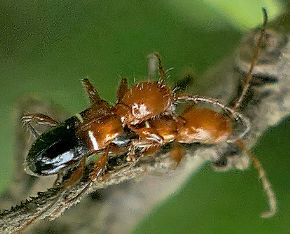
Euderces reichei (longhorn beetles mating)
| The three species shown above all resemble insects that have more potent defenses than they do. The top mimics a firefly, a beetle that contains poisonous lucibufagins and is therefore avoided by predators, while the next two mimic ants, many of which possess toxic venom. |

Rhopalophora longipes (longhorn beetle)

some really small flies and beetles
top left: Melanomyza femoralis (lauxaniid fly)
top right: Linogeraeus neglectus (weevil)
bottom left: Nemotelus bruesii (soldier fly)
bottom right: Cryptorhopalum haemorrhoidale (dermestid beetle) |
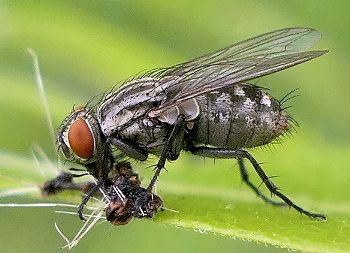
Unknown sp. (flesh fly eating what appears to be
a dead caterpillar)

Asindulum sp. (predatory fungus gnat)
| These mosquito-like flies get their common name from the larval diet: they are either predaceous or mycophagous (fungus eaters). |

Mecaphesa sp. (crab spider eating predatory fungus gnat)

Mecaphesa dubia (crab spider)

Eustala anastera (orbweaver eating soldier fly)

Dictyna sp. (meshweb weaver)

Maevia inclemens (jumping spider)

Loxosceles reclusa (brown recluse)
| While many spiders have eight eyes, the recluse has only six. These are grouped into three closely spaced pairs (diads) that, with only moderate magnification such as shown here, look very much like a nose flanked by two button eyes! |
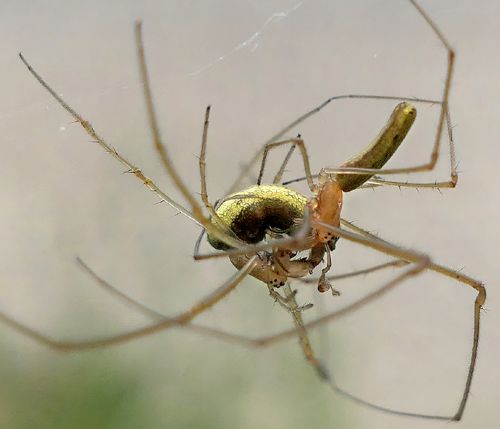
Tetragnatha laboriosa (silver longjawed orbweavers mating)
| The female is on the left and the male is inserting one of his pedipalps into one of her genital openings. His other pedipalp can be seen held aloft in front of his face; he must repeat the insertion procedure on the other side. |
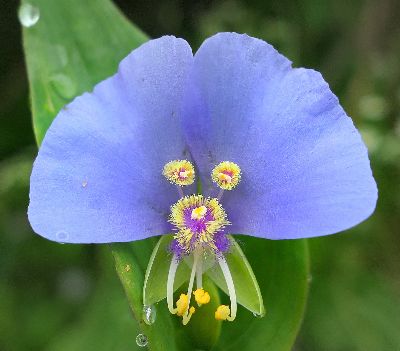
Tinantia anomala (false dayflower)

Oenothera laciniata (cutleaf evening-primrose)

Euodynerus foraminatus (mason wasp gathering mud)

Cerceris sp. (wasp)
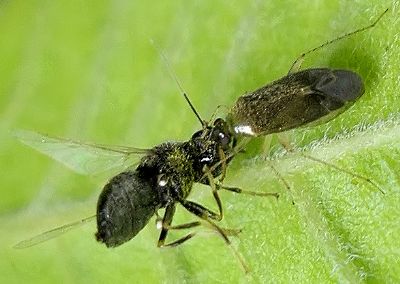
Plagiognathus sp. (plant bug eating soldier fly)
| Even phytophagous (plant eating) bugs sometimes scavenge carcasses they happen to find. The same tube mouth that allows them to suck the juice from vegetation also works on body fluids. |
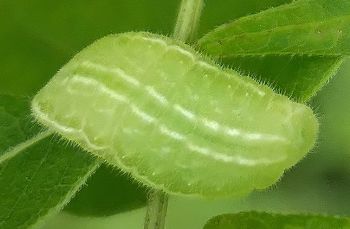
Phaeostrymon alcestis (soapberry hairstreak larva)

Cryptothelea sp. (bagworm hanging by a line of silk)

Morrisonia mucens (gray woodgrain larva)
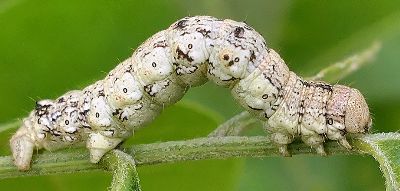
Phigalia strigataria (small phigalia larva)
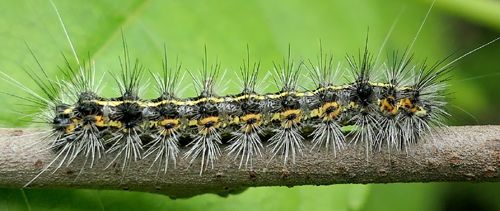
Spilosoma dubia (dubious tiger moth larva)

Acronicta tota (dagger moth larva)

Prays atomocella (hop tree borer moth)

Lycomorpha pholus (black-and-yellow lichen moth)
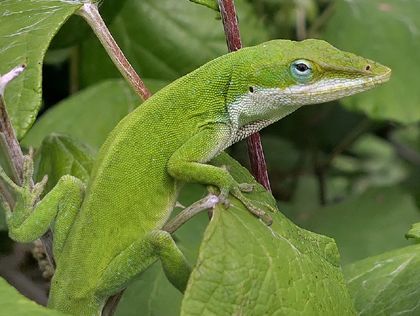
Anolis carolinensis (green anole)

![]()